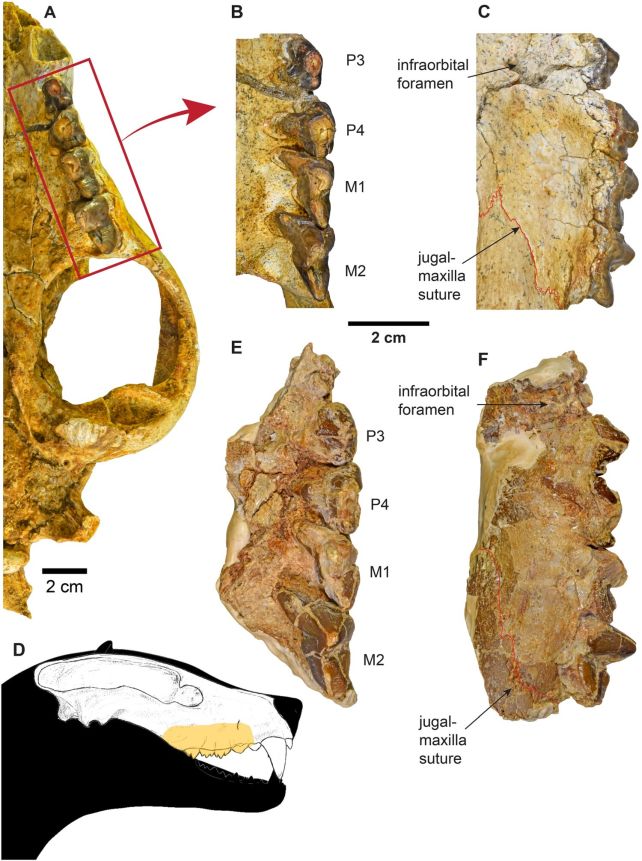
In the region of Fayum, Egypt, where dry desert landscapes dominate today, a vibrant forest once flourished, rich in biodiversity.
However, this habitat was not a safe haven for all its inhabitants. The primates, hippopotamuses, elephants, and hyraxes that roamed 30 million years ago were likely hunted by one formidable predator: a leopard-sized hypercarnivore with powerful jaws and sharp teeth.
This conclusion stems from an exciting discovery made by paleontologists, who uncovered a nearly complete skull of this newly identified apex predator, a member of the extinct group of carnivores known as Hyaenodonta.
A research team led by paleontologist Shorouq Al-Ashqar from Mansoura University and the American University in Egypt has named this fearsome creature Bastetodon syrtos, inspired by Bastet, the ancient Egyptian goddess symbolizing protection and maternal care.
“For several days, we carefully excavated through layers of rock dating back approximately 30 million years,” Al-Ashqar recalls about the dig that revealed the fossilized skull.
“Just as we were wrapping up, one of our team members noticed something unusual—a set of large teeth protruding from the ground. His enthusiastic shout united the team and sparked an incredible discovery: the nearly complete skull of an ancient apex predator, an exciting find for any vertebrate paleontologist.”

The Fayum Depression, the site of this significant discovery, is a crucial fossil-rich area that provides insight into a 15 million-year span during the Paleogene period, an essential era in the evolution of mammals.
Paleontologists have been exploring this region for over a century, uncovering the remnants of the thriving ecosystem that once existed.
“The Fayum is recognized as one of Africa’s most significant fossil sites,” notes paleontologist Matt Borths from Duke University in the USA. “Without this site, our understanding of the origins of African ecosystems and the evolution of native mammals like elephants and primates would be severely limited.”
While all fossil remains are vital for comprehending the anatomy of extinct species, skulls hold particular importance as they offer critical insights into the survival tactics of these creatures. The skull of Bastetodon shows characteristics consistent with Hyaenodonta, allowing for confident classification and providing clues about its lifestyle.
Researchers suggest this ancient animal was a hypercarnivore, meaning its diet, similar to that of cats and crocodiles, consisted of over 70% meat. It functioned as a top predator within its food web.
Moreover, this discovery has provided new context for fossils unearthed 120 years ago. Those remains belonged to a different group of hyaenodonts that lived in the Fayum area millions of years earlier. Initially classified with European hyaenodonts in 1904, they are now recognized as part of the unique Fayum ecosystem.

Al-Ashqar and her team determined that these fossils, now classified as belonging to the genus Sekhmetops (named after Sekhmet, the Ancient Egyptian goddess of war), originated in Africa through successive waves and are distinct from their European counterparts. Similarly, Bastetodon is also traced back to Africa.
These animals eventually expanded across the Northern Hemisphere, reaching territories in Asia, Europe, India, and North America. However, environmental shifts led to their decline in Africa, allowing other predators to occupy the ecological niches they left behind.
“The Bastetodon discovery is crucial for enhancing our understanding of hyaenodont diversity and evolution, as well as their distribution on a global scale,” Al-Ashqar asserts. “We look forward to continuing our studies to further explore the complex interactions between these ancient predators and their habitats throughout history.”
The findings have been published in the Journal of Vertebrate Paleontology.
Related News









